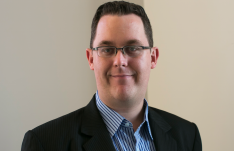Leadership change: What now for Dentsu Aegis, Carat and the media industry?
 Dentsu Aegis has undergone a sudden and dramatic leadership transition with Luke Littlefield being replaced by Simon Ryan as CEO. Nic Christensen looks at what drove the change at Australia’s second-largest holding group and what it means for its agencies, clients and the media industry alike.
Dentsu Aegis has undergone a sudden and dramatic leadership transition with Luke Littlefield being replaced by Simon Ryan as CEO. Nic Christensen looks at what drove the change at Australia’s second-largest holding group and what it means for its agencies, clients and the media industry alike.
It’s hard to think of a man more different to Harold Mitchell than Luke Littlefield.
When Harold Mitchell left in 2013, Littlefield – a finance guy and CFO by background – was installed to replaced the man who had quite literally learnt the media buying business as he simultaneously built it.
Littlefield’s background was very different.


Ha, a CFO in charge, watch the business shrink.
Re:to overturn one of Harold Mitchell’s long-standing decrees that saw the agency group eschew awards
As an ex-Carat staffer I can say we have been entering awards for years just not winning many. But it will be good to see the group move back to its former glory day.
Congratulations Simon! Well deserved and a great challenge for you
Wonka, did you read the article? Simon isn’t a CFO…
he’ll do a stirling job
Seriously who cares. Just another media conglomerate with a terminally ill business model of which the vast majority of staff is under 30 for what is widely considered to be unskilled menial work.
Att: Boiler, the article is referring to Harold’s mandate that all Aegis companies not be part of the MFA or enter any associated industry awards. As a current Carat staffer who’s been here for over five years I can confidently say our focus on awards only stepped up in 2014. Not sure what you’re referring to in terms of ‘former’ glory days – the business has never been more successful than it is right now.
Also TonyR, ‘unskilled and menial’ – what a boring and outdated view of media agencies. We’re evolving just like the rest of the industry, which is also jam-packed with under thirty’s doing great things.
Congratulations Simon!
I’d explain it as one award and not part of the MfA’s. I said we stepped up our awards push in 2014, not that we’d never entered one prior.